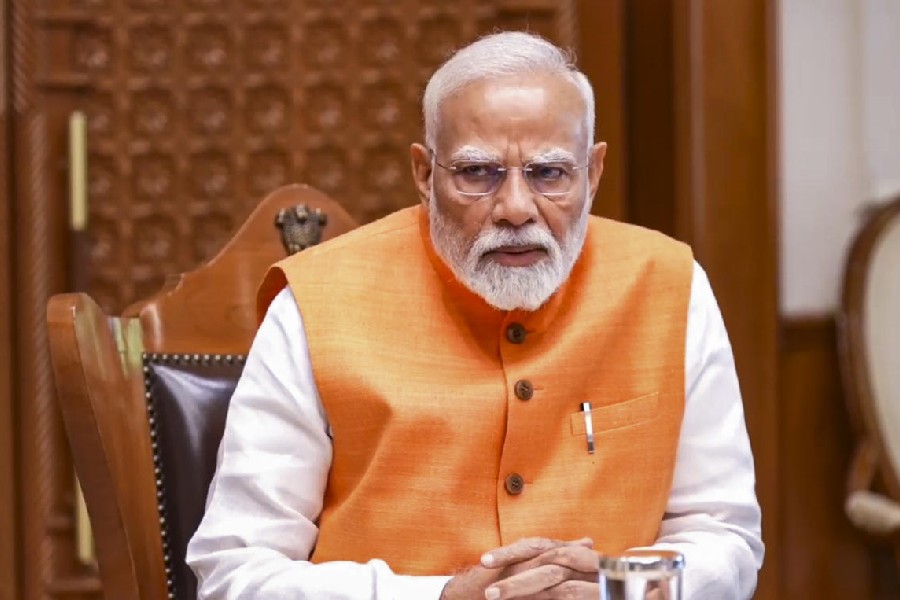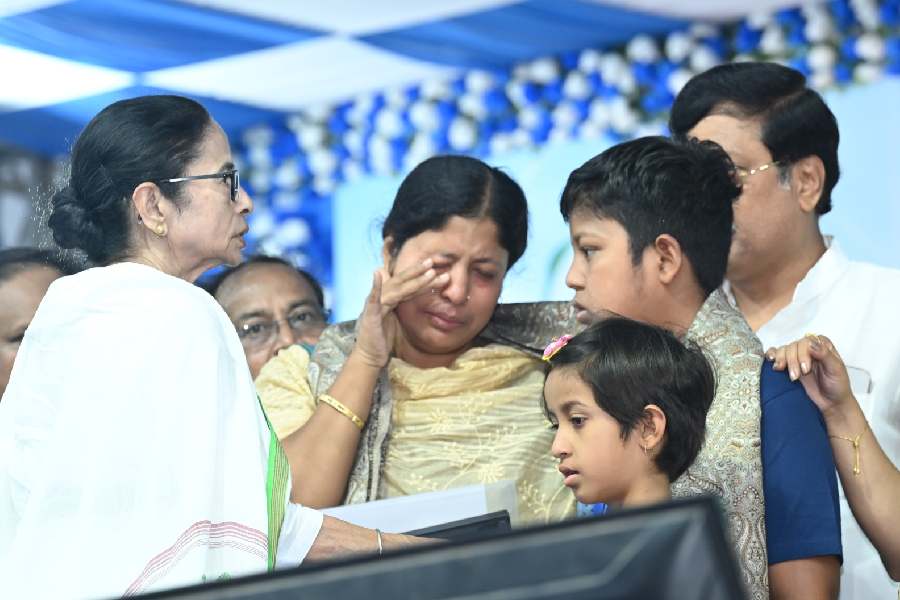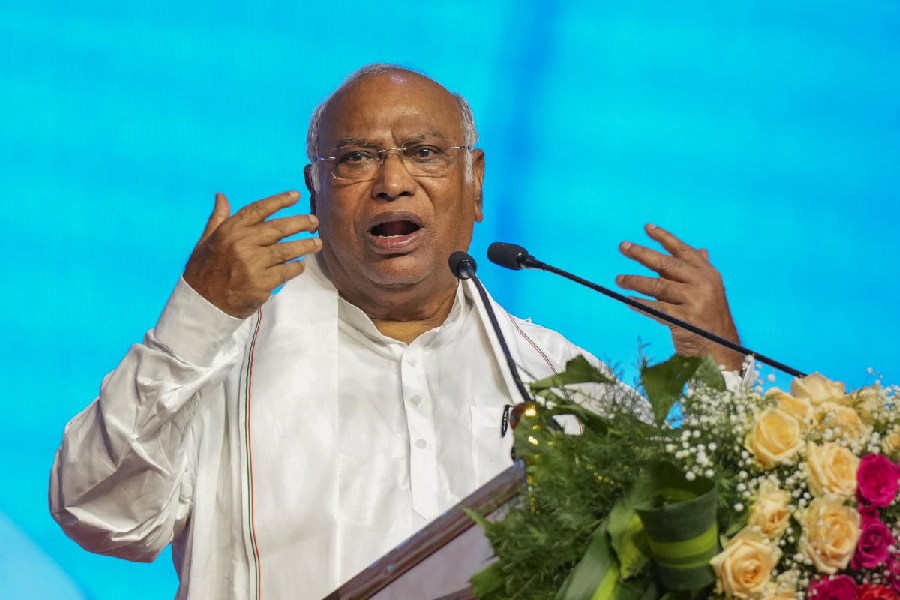An ancient art of enchantment is being reinvented for the modern times.
Boshikoron literally means having someone under control. It is the art practised by tantriks to help someone in trouble, usually a woman left by her man for another woman. Boshikoron is supposed to be so powerful that apparently it can not only bring back the straying man but also wagging his tail and barking at the feet of the wronged wife, literally. It can transform bipeds into quadrupeds.
A dark force, part magic, part eros, that enslaves men — it can be used on errant business partners as well — and keeps them there. Obviously it has its uses in every age.
It certainly has many uses in contemporary Bengal. For every jyotish (astrology) or numerology ad, it is not uncommon to find a boshikoron ad in Bengali newspapers, especially during the weekend.
Ads stare at you in local trains, in buses and from billboards at busy junctions in the city.
But its modern practitioners deny it has anything to do with black magic. A young boshikoron specialist, who looks like a chic TV actress in traditional gear, says a contemporary reason is responsible for the recent popularity of boshikoron: technology.
Technology has changed the realm of intimacy. Relationships are not what they were at all. Extramarital affairs are on the rise. Marriages are under threat like never before.
“The mobile phone, Facebook and chat have impacted relationships in general,” she says. Her art has proved a successful solution in most cases, she claims.
Many of her clients come to her with relationship problems and they come from all sections of the society. And not only married couples.
The specialist takes pains to “demystify” boshikoron. She says it has got its bad name and its association with black magic from the other tantrik arts like maran (killing) and uchatan (expulsion), with which boshikoron forms a group of six (shatkarma). But maran and uchatan are practised by the unethical, she says.
She uses faith, she says. She performs a puja and asks her client to chant a mantra. But she hasn’t been able to rid boshikoron of some traditional elements that give the practice its charm and attraction: she prescribes joributi (secret herbs and roots), and also sammohan (hypnosis, with suggestion of seduction).
“The idea is to restore the couple to their normal, physical, marital relationships,” she says.
The other strength of boshikoron, she says, is that it yields results within a given time.
Meanwhile, the weekend Bengali newspapers overflow with boshikoron ads. All look identical, except in the details. One gentleman promises boshikoron in one day, another a high-intensity version in 24 hours, another in three minutes, another offers “Kamini mohini special boshikoron”. The last one is to get the girl.
When relationships go off-line, go for boshikoron.
 |
| A football field on AJC Bose Road has been turned into a 300-seater boys’ hostel for students of St. Xavier’s College. The Fr. Leeming Boys’ Hostel was inaugurated on Saturday, with Principal Father Felix Raj performing the ribbon-cutting ceremony along with Calcutta University vice-chancellor Suranjan Das, Jayaraj Veluswamy, provincial, Calcutta Jesuit Province, and rector Father Dominic Savio. After the unveiling of the inauguration stone, students sang Joi hok. “About 30 months ago we were at this very spot trying to plan what we could do. What was a football ground today stands as a hostel. The girls’ hostel is under construction and we plan to inaugurate it next June. I want to thank everyone who worked day and night to bring up this hostel,” said Felix Raj. Picture by Bishwarup Dutta |
 |
Mixed art
A pencil sketch depicting poignant facial expressions, a collection of ceramic artwork and a watercolour-and-print-paste-on-paper work depicting greed were part of an exhibition organised by Tree in the north gallery of Academy of Fine Arts from June 24 to 30. The participants included six student artists — Partha Pratim Roy, Narayan Kumar Das, Anupam Bera, Maheswar Mondal, Suvojit Mondal and Pravakar Singha. Their works are an interesting mix of watercolour, charcoal, pencil, mixed media and ceramic.
Maheswar Mondal’s sari draped around a mannequin was an eyecatcher. The sari is a fusion of textile designs, calligraphy and a child’s world. Anupam Bera’s gouache on cloth, Gentleman, and Prahakar Singha’s glittering artwork in mixed media were equally impressive.
 |
“I love to capture the facial expressions of the downtrodden. That is what I have tried to do for this exhibition,” said Partha Pratim Roy.
Contributed by Chandrima S. Bhattacharya, Chandreyee Ghose and Malancha Dasgupta











